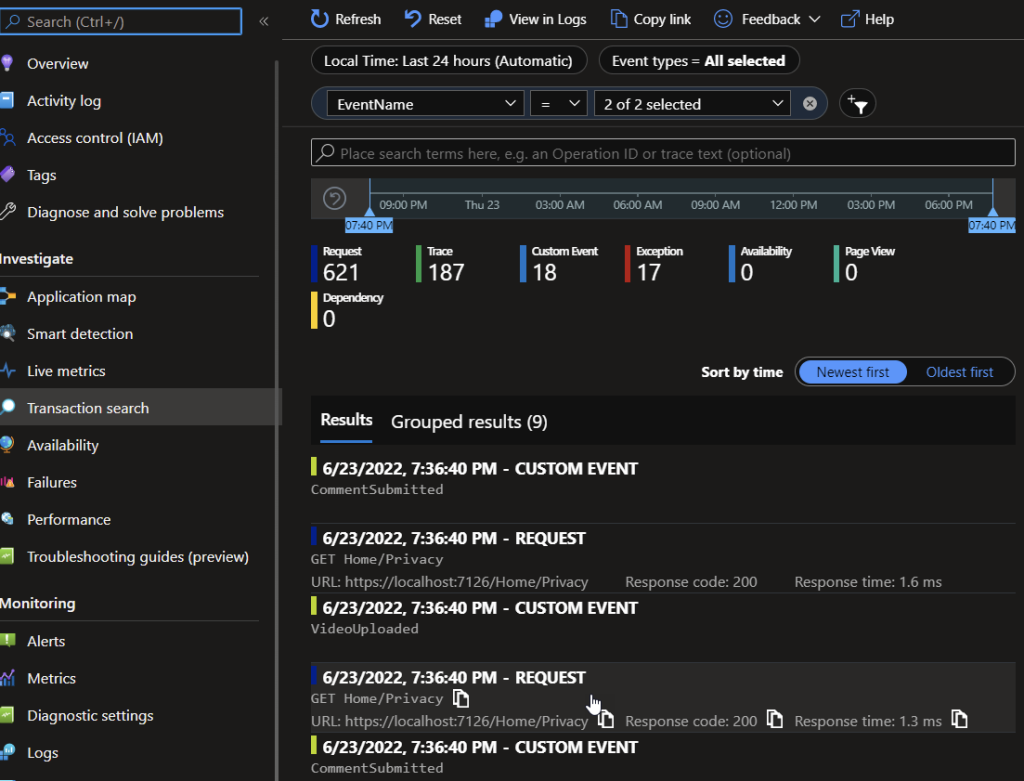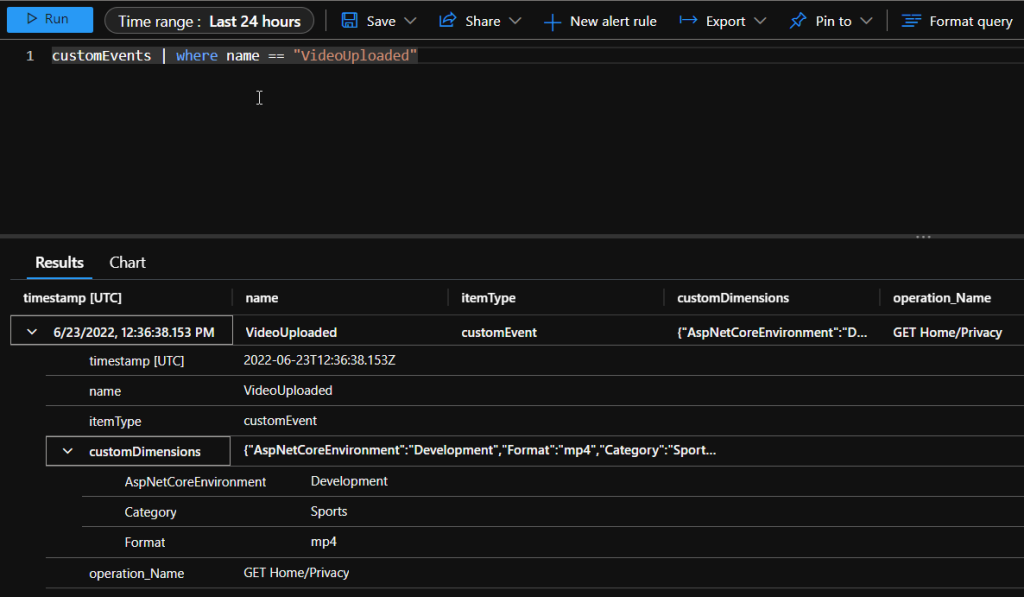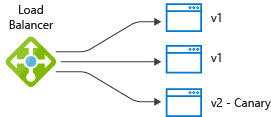Getting customEvents with Azure Application Insights customEvents and .NET 6
dotnet new mvc -o videowebapp cd videowebapp dotnet add package Microsoft.ApplicationInsights.AspNetCore
Program.cs: Adding builder.Services.AddApplicationInsightsTelemetry();
var builder = WebApplication.CreateBuilder(args);
// Add services to the container.
IServiceCollection serviceCollection = builder.Services.AddApplicationInsightsTelemetry();
builder.Services.AddControllersWithViews();
var app = builder.Build();
// Configure the HTTP request pipeline.
if (!app.Environment.IsDevelopment())
{
app.UseExceptionHandler("/Home/Error");
// The default HSTS value is 30 days. You may want to change this for production scenarios, see https://aka.ms/aspnetcore-hsts.
app.UseHsts();
}
app.UseHttpsRedirection();
app.UseStaticFiles();
app.UseRouting();
app.UseAuthorization();
app.MapControllerRoute(
name: "default",
pattern: "{controller=Home}/{action=Index}/{id?}");
app.Run();
Getting InstrumentationKey
az resource show \
--resource-group <resource_group_name> \
--name <resource_name> \
--resource-type "Microsoft.Insights/components" \
--query properties.InstrumentationKey
appsettings.json : adding InstrumentationKey
{
"Logging": {
"LogLevel": {
"Default": "Information",
"Microsoft.AspNetCore": "Warning"
}
},
"AllowedHosts": "*",
"ApplicationInsights": {
"InstrumentationKey": "0000000000000000000000000000000",
"LogLevel": {
"Default": "Information",
"Microsoft": "Error"
}
}
}
HomeController.cs : Adding ” this.aiClient.TrackEvent(“CommentSubmitted”); ”
using System.Diagnostics;
using Microsoft.AspNetCore.Mvc;
using videowebapp.Models;
using Microsoft.ApplicationInsights;
namespace videowebapp.Controllers;
public class HomeController : Controller
{
private TelemetryClient aiClient;
// private readonly ILogger<HomeController> _logger;
public HomeController(TelemetryClient aiClient)
{
this.aiClient = aiClient;
}
/* public HomeController(ILogger<HomeController> logger)
{
_logger = logger;
}
*/
public IActionResult Index()
{
// _logger.LogWarning("fujuTE: An example of a Warning trace..");
// _logger.LogError("fujuTE: An example of an Error level message");
return View();
}
public IActionResult Privacy()
{
// _logger.LogInformation("fujuTE: An example of a Information trace..");
// Track an event
this.aiClient.TrackEvent("CommentSubmitted");
// Track an event with properties
this.aiClient.TrackEvent("VideoUploaded", new Dictionary<string, string> {{"Category", "Sports"}, {"Format", "mp4"}});
return View();
}
[ResponseCache(Duration = 0, Location = ResponseCacheLocation.None, NoStore = true)]
public IActionResult Error()
{
return View(new ErrorViewModel { RequestId = Activity.Current?.Id ?? HttpContext.TraceIdentifier });
}
}


See Also:
- https://docs.microsoft.com/en-us/azure/azure-monitor/app/asp-net\
- https://docs.microsoft.com/en-us/azure/azure-monitor/app/asp-net-trace-logs
- https://docs.microsoft.com/en-us/dotnet/api/system.diagnostics.trace.traceinformation?view=net-6.0
- https://docs.microsoft.com/en-us/azure/azure-monitor/app/tutorial-app-dashboards
- https://docs.microsoft.com/en-us/dotnet/csharp/whats-new/tutorials/nullable-reference-types
- https://github.com/dotnet/samples
- https://docs.microsoft.com/en-us/learn/modules/instrument-web-app-code-with-application-insights/
- https://learn.microsoft.com/en-us/azure/azure-monitor/app/sdk-connection-string?tabs=net

